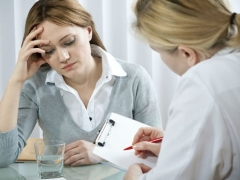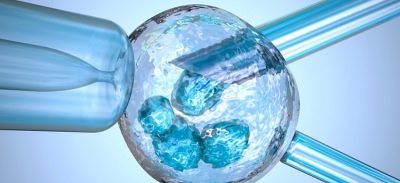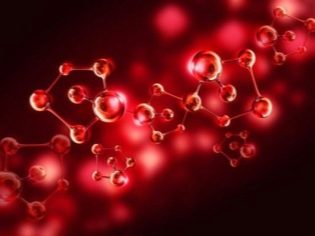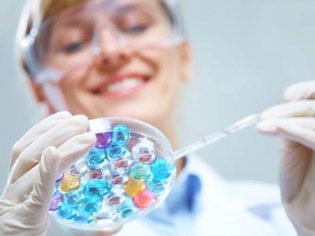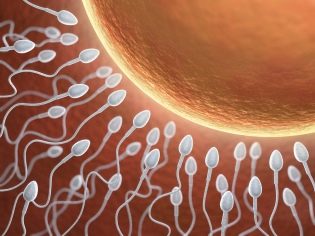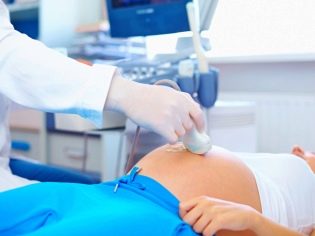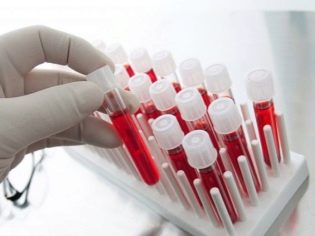Why is the first IVF often unsuccessful and what is the probability of success?
After prolonged treatment for infertility, the couple decides on IVF. And it seems that the long-awaited pregnancy is so close that some women even begin to look after children's things, strollers, toys in advance. However, the first in vitro fertilization protocol often does not bring the desired result. Why is this happening and what is the probability of success, we will tell in this article.
Reasons for failure
To begin with, it should be noted that no one doctor, not one clinic can guarantee one hundred percent pregnancy, either in Russia or abroad. With this thought, and should be sent to the first IVF, it will help easier to survive the failure and move on to the goal.
From the first time, only 45-50% of couples can become pregnant. This means that, entering into the first protocol, the chances of getting pregnant are almost 50x50. Then it all depends on the health of men and women, on their age, on how high-quality their eggs and sperm are, and on other reasons. The first IVF is almost always associated with a high load on the woman's body - she first undergoes the procedure of stimulation of the ovaries, as a result of which doctors are able to get a greater number of mature eggs for fertilization “in vitro”.
Hormone therapy is rather aggressive, which can not affect the health of a woman.
The main reasons why the first IVF is unsuccessful are as follows.
- Age of the woman. The older the patient, the lower the chances of a successful IVF on the first attempt.
- Hormonal disorders. The high level of follicle-stimulating hormones, which are used to obtain superovulation in the first phase of the menstrual cycle, does not create the most favorable background for carrying a baby. If the ovarian hyperstimulation syndrome occurs with their increase, then the chances of becoming pregnant are considered to be rather low.
- A small number of eggs. The smaller as a result of the puncture, the oocytes of normal quality were obtained, the less likely pregnancy is. This often occurs with IVF in the natural cycle, when hormonal stimulation is not previously used. Then doctors can get only 1, maximum 2 eggs.
- A small number of embryos. Even if there are enough eggs received, it’s not a fact that all of them successfully pass the fertilization stage. Embryos that begin to develop from fertilized oocytes are closely monitored and selected — only high-quality, viable and strong ones are selected for replanting into the uterus. If there is only one such embryo, the probability of successful completion of the protocol will be significantly lower.
- Endometriosis in women. If the endometrium is heterogeneous, its thickness is insufficient, implantation may not occur. Even the hormonal support of endometrial growth carried out in the first phase of the cycle is not always successful.
- Abortions and operations in the anamnesis. If earlier a woman had abortions, as well as being cured with a diagnostic or therapeutic cure, the endometrium partially loses its function. Postoperative changes in the endometrium are also difficult to correct.
- Genetic incompatibility partners. To exclude such a reason for unsuccessful IVF, you should visit the genetics in advance and make partners compatibility tests. Now genetic studies are mandatory for couples who are to receive IVF only if the woman and man are over 35 years old. The rest can do this analysis on their own.
- Chronic and acute ailments. In the process of stimulation of superovulation under the action of large doses of hormones, chronic diseases existing in a woman, such as the pathology of the kidneys, liver, heart, diabetes, can worsen. Already after embryo transfer, a woman could get a viral infection or catch a cold, in this case the probability of successful IVF is also reduced.
- Poor sperm quality. If IVF is carried out with the use of donor material, such a reason is completely excluded, because donor sperm undergoes strict medical monitoring, and with violations of semen the man simply can not become a donor. When fertilizing eggs with husband's sperm, there can be certain difficulties if there is a male factor of infertility.
- Hydrosalpinxes. Sometimes it is not possible to detect the accumulation of fluid in the fallopian tubes during a medical examination before IVF - this pathology is not always visible even on ultrasound. However, the development of pregnancy hydrosalpinx hinder. Some doctors are inclined to believe that about a third of unsuccessful first IVF attempts are related to the pipe factor, however, some experts are of the opinion that the hydrosalpinx cannot harm the implantation process. Check with your doctor what opinion he holds.
The first IVF is often unsuccessful for reasons that even highly qualified doctors cannot explain. These are the so-called idiopathic causes. All analyzes were normal, the embryos were obtained of good quality, the transfer was successful, the endometrium was ready, but for some reason implantation did not occur. Such an outcome is not the rarest, and it is recommended to treat it as a process that is simply beyond human control, because in the process of conception and implantation, not everything is under the control of physicians.
Reduces the likelihood of success after the first attempt to overweight a woman, her wrong attitude to her health. So, non-compliance with the recommendations to maintain a calm measured life after replanting, limit physical exertion, and sleep at night often leads to the absence of a positive result.
Smoking or taking even small doses of alcohol after embryo transfer reduces the likelihood of success by half. The stress that a woman feels since the start of the IVF protocol and which accumulates with each day can also prevent embryo implantation, and if it is successful, it increases the likelihood of miscarriage in the early period.
The reasons for the failure to achieve positive results in the first protocol may lie in the immune and autoimmune processes, as a result of which pregnancy at the cellular level is rejected by the woman’s body.
The probability of success in numbers and facts
The first protocol ultrasound, as the notorious pancake, may well be a "lump". Only half of women under the age of 35 manage to become mothers after the first IVF. If a woman at the time of IVF is already 37-39 years old, then the probability of becoming pregnant in the absence of obvious reasons for failure is about 35%.
In 40 years, only 15-19% of women after the first IVF become pregnant. In 42-44 years, this probability is below 8%. And even at this age, the likelihood of becoming pregnant in the IVF protocol is generally higher than with natural conception.
A couple who is at reproductive age, healthy and having no problems with the reproductive system, during sexual intercourse on the day of ovulation directly, the chances of conceiving from the first time are only 7-10%.
The first unsuccessful attempt of IVF is not a verdict or cause for despair, if only because approximately 25% of the couples that failed in the first IVF protocol after some time get an independent conception, since the reproductive system starts to work more efficiently after hormonal stimulation from outside. .
In the second and third protocols, the probability of becoming pregnant is higher than in the first, by about 5-10%. However, after an unsuccessful fourth-fifth IVF attempt, the chances of success are reduced and do not exceed 15%.
In 60% of cases, when two or more embryos are transplanted, multiple pregnancies occur after IVF, and a woman who dreamed of one child gives birth to twins or even triplets.
When to try again?
Only a doctor can answer this question. The time most favorable for the next IVF attempt depends on the state of health of the spouses, on the identified causes of failure in the first protocol. That is why you should not despair, but rather act.
Usually, on average, the recovery of a woman is about three months. If the first IVF was performed without hormonal stimulation in the natural cycle, you can plan a new protocol as early as next month after the end of menstruation.
If the first protocol was stimulated, then it is very likely that eggs or embryos may remain that meet all the requirements of reproduction specialists and embryologists, but are not useful for the first time. Then, after three months, a cryoprotocol can be assigned to a woman. She will no longer be subjected to a “shock” hormonal attack and puncture of the ovaries; in a favorable period, she will simply be transferred to the cryoembryos, previously unfrozen. In this case, there will be no hormonal therapy, ovarian puncture, the woman will be less susceptible to the harmful effects of medications and stress, respectively, the probability of success will increase significantly.
Useful tips
It is quite difficult to significantly increase the chances of IVF success in any way. But ignoring the recommendations that the doctor gives before the first IVF or in the recovery period before the second (third and other) attempt, can reduce the efforts of doctors to nothing. Therefore, a woman who is determined to become a mother should remember the following.
- It is imperative that you take all the recommended tests on time. This will help to determine the cause of the first failure. Based on the test results, the doctor will more effectively correct the following protocol.
- Depression and anxiety to which women who go through unsuccessful protocols are subject must remain in the past. In a dysfunctional psychological and emotional state, it is better not to plan a new attempt, because stresses violate the natural hormones and prevent pregnancy. It is advisable to visit a psychotherapist. This specialist will help to cope with disappointment after the first unsuccessful attempt and effectively prepare for the next one.
- Recovery is an important process. This means that between attempts a woman needs to relax as much as possible, play sports, swim, and lead an active lifestyle. With the permission of the doctor, it is worth trying physical therapy, hirudotherapy, mud baths, massage, including gynecological. Do not forget about the positive emotions that sex gives, especially since after an unsuccessful first IVF, the sex life of the spouses during the entire recovery period is not regulated by medical recommendations. Do not forget that sometimes it is during the recovery period that a couple gets to become pregnant on their own if the cause of infertility was not the tubular factor and the absence of ovaries.
- Be keenly interested in everything that is written in your medical record. If the doctor has determined that poor embryos were the cause of the unsuccessful first attempt, this is the first sign that the clinic and doctors should be changed as soon as possible, because a good embryologist will never recommend embryos with developmental disabilities for transfer. If it was revealed that the embryos were injured during the transfer - the advice is the same: change the clinic.
- Enlist the support of relatives and friends, husband, friends. Do not withdraw into yourself, do not remain alone with your anxieties and experiences. This will help maintain pep and optimism. And they can still be useful.
And in conclusion there are some more useful statistics: the most often long-awaited pregnancy in a woman comes from the second attempt - 45% of cases of successful IVF. In 25% of cases, pregnancy occurs after the third protocol. But there are also women who manage to become pregnant only after 8-9 protocol of IVF.
Already for this reason do not despair. Modern reproductive technologies allow women to find joy in motherhood at the age of 25, 50, and even older. Even the most difficult diagnoses that led to infertility can be defeated if the woman is positive.
In the next video leading program "Live is great!" debunk the myths that have developed around the "test tube children" and talk about the features of this procedure.
